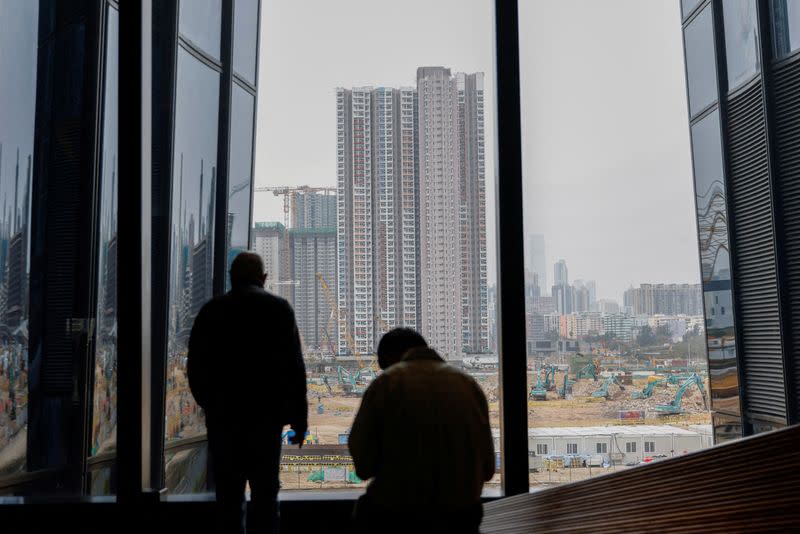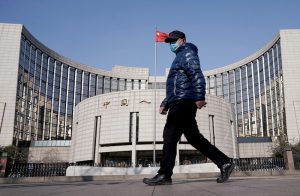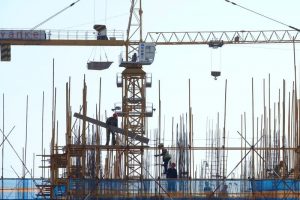Recent construction data in China shows that new housing projects plunged by nearly two thirds in the year to May – to a level that is less than half its peak in 2021.
The 63% fall in new starts to 634 million square metres (about 7.5 billion square feet) in the 12 months through April stemmed from chronic oversupply and policies imposed by Beijing to deleverage massive debt spread right across the sector.
There are positive aspects to that news, but analysts say a clean-up of bad assets is still needed, because of lingering fears of prolonged economic stagnation similar to what Japan endured.
ALSO SEE: Vietnam’s Massive Saigon Bank Bailout Rises to $24.5 Billion
On paper, the world’s second-largest economy is almost where the US and Spain were when their late 2000s property crises began to stabilise, with new Chinese housing construction now at less than half its 2021 peak.
This could indicate that home building activity may find a bottom within a year or so, removing some of the weight China’s real estate troubles are placing on economic growth.
“It’s reasonable to expect that construction will stabilise soon,” Rhodium Group partner Logan Wright said.
Taking into account demographics and other factors, the International Monetary Fund estimates fundamental demand for housing in China to average 950 million square metres over the next 10 years.
Some of the demand would have to absorb China’s giant existing inventory, therefore the IMF projects new housing starts to average 715 million square metres – slightly above current rates.
This could mean real estate investment, whose steep 10% back-to-back annual declines JPMorgan estimates chopped 1.5 percentage points off China’s economic growth in each of the past two years, may be close to finding a floor.
George Magnus, research associate at Oxford University’s China Centre, says that could come in 2025 or even sooner.
“There is potential for a cyclical rebound, even while we’re talking about medium-term shrinkage,” in the property sector, Magnus said.
Home prices down 11%
Property investment is expected to gravitate more towards wealthy coastal areas. Shanghai and four of China’s richest provinces – Zhejiang, Jiangsu, Guangdong and Shandong – accounted for 49% of January-April investment, up from 39% five years ago.
But that is where the cyclical silver lining ends and less favourable comparisons with 1990s Japan start.
Wright estimates the industry as a whole, which used to represent about a quarter of China’s economic activity, will stabilise at 40-50% of its peak levels and never return as a driver of growth.
Prices have yet to fully adjust and the negative financial spillovers will continue, he said.
New home prices in China have fallen 11%, according to official data. JPMorgan estimates prices for older apartments dropped by a similar amount.
The 30-40% peak-to-trough plunge in the US and Spanish downturns started in 2006-07 and lasted more than five years. In Japan, the correction took more than 18 years, pushing prices down by 47% in the end.
So far, China’s pace has matched Japan’s. Odds are that it will continue to do so, analysts say.
What’s missing from both the Chinese and Japanese responses to the crisis is an early recognition of losses.
Japan asked banks to purchase land to slow down the fall in prices. China achieves something similar by placing limits on how much developers can lower new home prices and through a drip-feed of other support measures.
JPMorgan analysts say this is “perhaps an intentionally chosen strategy to mitigate financial spillover risks.”
A stock of unsold homes estimated at almost twice the size of London still exists on the balance sheets of cash-strapped Chinese developers, whose debts sit on the books of banks and other institutions.
By contrast, the US spent an initial 5% of gross domestic product to absorb toxic assets from financial institutions through its Troubled Asset Relief Program. Spain created a bad bank.
Long-term adjustment foreseen, as in Japan
China is not keen on sweeping bailouts, one policy adviser said, asking for anonymity to discuss a sensitive topic.
“The government has no intention to prop up the property market,” the adviser said. “It aims to stabilise it, or at least slow down its decline.”
China introduced in May a new support package for the sector, cutting mortgage rates and downpayments and instructing local governments – already $9 trillion in debt – to buy “some” unsold apartments and turn them into affordable housing.
Analysts say the purchases transfer bad assets from developers to local governments, delaying writedowns. But eventually, the losses will have to be recognised, which is why comparisons with Japan’s lost decades persist.
Alicia Garcia-Herrero, Asia Pacific chief economist at Natixis, says local governments may suffer a similar fate to the Japanese banks, which ultimately had to be recapitalised, implying a “longer, more protracted adjustment.”
“There hasn’t been a clean-up,” Garcia-Herrero said. “This is why China looks more like Japan and not like the US or Spain.”
“I do not think China’s housing prices will ever be higher on average. Tier 1 cities, maybe,” she added, referring to Beijing, Shanghai, Shenzhen and Guangzhou.
- Reuters with additional editing by Jim Pollard
ALSO SEE:
China Pins Hopes on ‘Heavyweight’ Property Sector Rescue Bid
China’s Property Crisis Slows in 2024 But Downturn Yet to Ease
China Pins Hopes on ‘Heavyweight’ Property Sector Rescue Bid
China’s ‘White-List’ Makes Little Headway Amid Property Gloom
China Will Favour Developers Who Help the Masses: Minister
China Presses Banks to Fast-Track Loans to Property Developers
Mortgage Delinquencies in China Soared by 43% in 2023
PwC Probed For ‘Enabling Evergrande Misconduct For Years’
























